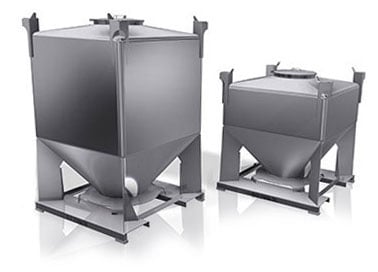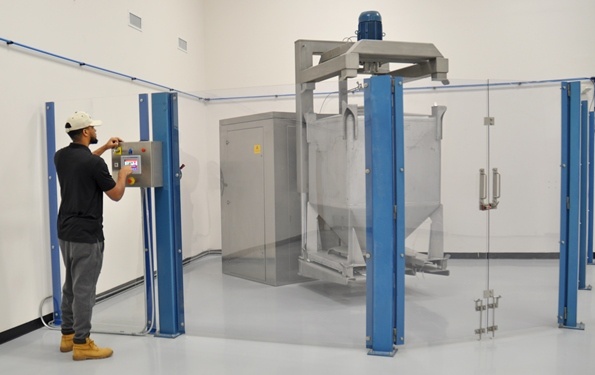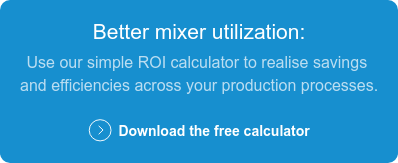As one of the largest manufacturing sectors, food and drink businesses are growing at a staggering rate. This growth is fuelled by demographic changes in population numbers and modern lifestyles that demand increased product variety. Competition in this sector is immense and adds in excess of £100 Billion in revenue in the United Kingdom alone.
In this article we look at the challenges on businesses today and how they can future proof their food and drink production processes to keep up with demand and capitalise on this growth opportunity.
Today's consumers have such high expectations of manufacturers, from niche, personalised products to precise labeling, sustainability and ingredient traceability. Consumers know what they want, where they can get it and if your product doesn't meet their needs they will go elsewhere. Add to this, increases in veganism, vegetarianism, allergen sufferers, health and fitness awareness, nutritional values and individual dietary requirements and it’s difficult for manufacturers to keep up.
With growing market opportunities, manufacturers cannot afford to rely on traditional operational processes and equipment to meet demand. They must innovate to stay ahead. But how do you do that while remaining competitive?
Agile Production
If you are widening the portfolio of products, you will need to facilitate multiple recipe changeovers, which often impacts production efficiency and output. More products also means more ingredients for your recipes. If these contain allergens then there is also a risk of cross-contamination, a significant factor as recipe changeovers increase. This will lead to extra time spent on cleaning.
Production flexibility is the key to surviving a world where multi-variant recipes and smaller orders are expected on demand. Transparency and sustainability are at the forefront of consumers’ minds when purchasing products, aside from the fact that most are regulated by law. Your reputation is at stake, along with your revenue if you don’t provide enough information or ensure that you are adhering to the quality standards expected by consumers.
Future Proofing
Identifying where you need capacity in the future is key to building a growing business. It is easy to say it’s all about forecasting but a solid growth forecast will provide the basis on which to plan your operational decisions.
How will you adapt to multiple recipes, shorter lead times and variable quantities? What products are you planning to develop and when are you looking to launch them? What materials and volumes will you be handling in 6, 12 or 24 months’ time?
Equipment choices, the size of factory and expansion plans will all be determined by the answers to the questions that follow.
Historically, when manufacturing using powders, most producers deal with low volumes so manual handling was sufficient; operators mix, process and pack products by hand.
In contrast, when larger volumes of one recipe needs to be produced, a fixed, linked system has been the answer. If you need equipment that bridges the gap between these two systems and one that is flexible enough to allow for business growth; a powder handling system that uses Intermediate Bulk Containers is the solution for you.
Why do Intermediate Bulk Container Systems offer the answer?
Matcon Powder Handling Systems are designed by experienced engineers to deliver
An IBC system allows you to transport powders between the manufacturing steps and run each process in parallel, meaning that all of the necessary powder processing stages are executed simultaneously. This also promotes contained, flexible manufacturing enabling you to adapt to market trends and varied size, multi-variant recipes as well as your large bulk orders. It is very much the best of both worlds and offers manufacturers reassurance that they can scale up or down on specific lines when needed and also realise efficiencies on existing processes.
 Compared to fixed-line systems, IBCs also save a huge amount of operator time and reduce waste. An IBC can be filled, while another IBC is blending, a 3rd IBC is being discharged and a 4th is being cleaned ready to re-enter the process once dried.
Compared to fixed-line systems, IBCs also save a huge amount of operator time and reduce waste. An IBC can be filled, while another IBC is blending, a 3rd IBC is being discharged and a 4th is being cleaned ready to re-enter the process once dried.
Increasing Flexbility at the Powder Blending Stage
When compared to a traditional fixed mixer system, IBCs enable continuous production. This means that your flow doesn’t have to stop while a fixed mixer is being filled, emptied or being cleaned.
Even higher volume batch processes such as mixing a base recipe can be actioned in bulk, ahead of time by pre-mixing. Lower volume batch processes, for example adding flavours, spices or colours can also be completed independently. You can even produce small and large quantities of multiple products simultaneously, experiment with new trial goods and test recipes without substantial investment costs.
If you had the ability to reduce the time you have to spend cleaning and increase the time you can be in production then your output will also improve.

Increase Powder Mixing Efficiency
We estimate that some manufacturers using fixed mixers (ribbon blenders or paddle blenders) could lose at least 20% of the shift to cleaning time. As the blender must be fully cleaned and dried before changing recipes your whole production process must be halted.
Read our guide to increase efficiency and ensure your resource time is spent producing high volumes of quality products and not cleaning and assembling a blender.
If you’re currently planning your businesses growth or have concerns that your company is missing out on market opportunities, complete our ROI calculator to see what can be achieved with a move to IBC based manufacturing.
Posted by
Matt BaumberTopics:
Food Manufacturing
